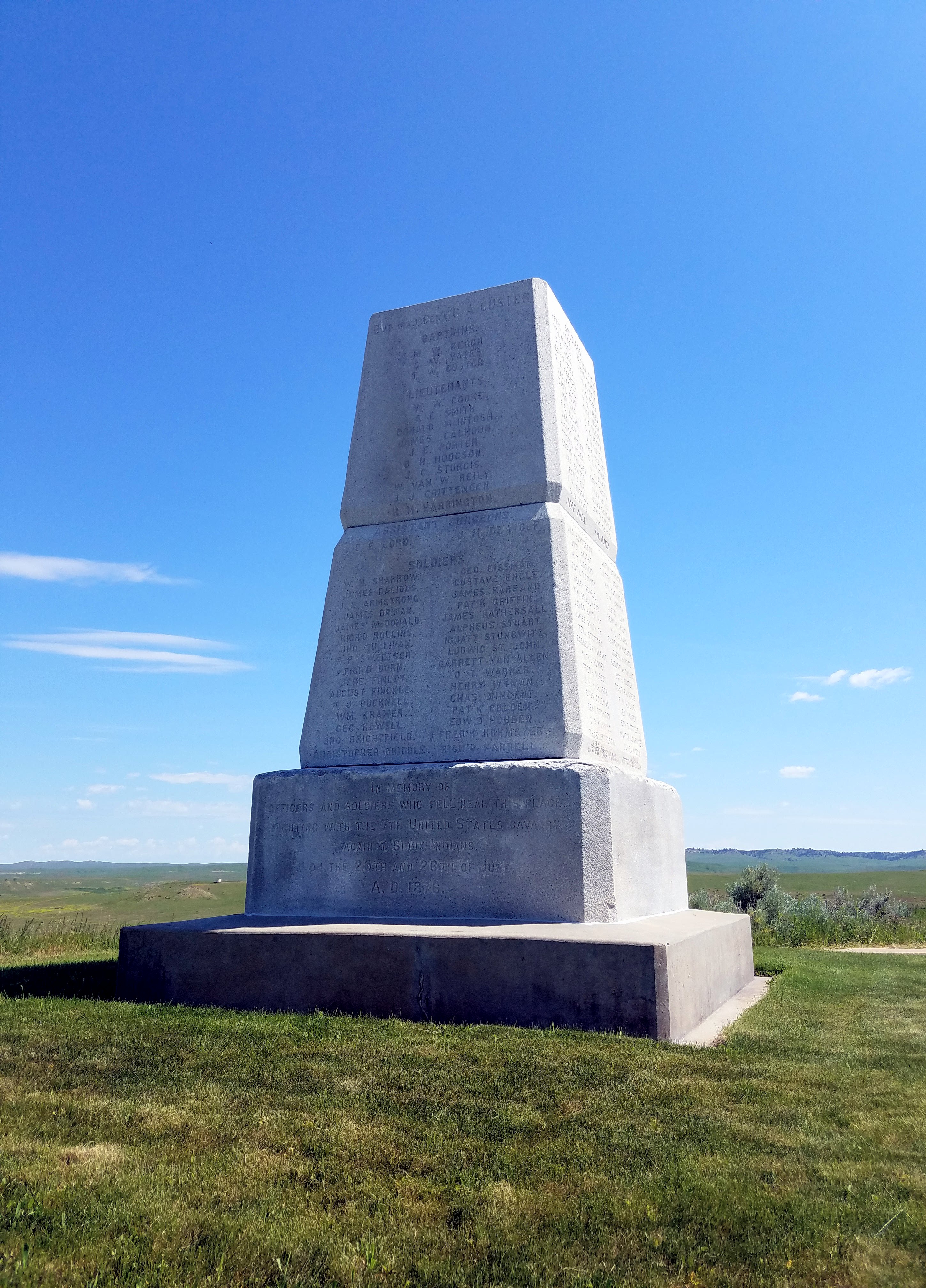On the Little Bighorn

This morning, bright and early, I arrived at the Little Bighorn. As I walk up from the Visitor Center to Last Stand Hill, one of the first things that grabbed my attention were the white marble markers scattered across the landscape. Placed in 1890, they represent where an individual trooper from the 7th U.S. Cavalry fell during the battle. Although they do not entirely represent all of the troopers in George Custer’s battalion, their sight is still haunting. I am planning a more detailed post on them for next month’s anniversary.
I spent part of the morning on Last Stand Hill. I was not alone, even with other visitors. At one point, a mother antelope and her baby ventured out of one of the many nearby ravines and ran up and over Battle Ridge, not 100 yards from where I was standing. In Medicine Tail Coulee I encountered a herd of horses.

For lunch, I enjoyed a peanut butter sandwich on Calhoun Hill. There, Company L, led by George Custer’s brother-in-law, James Calhoun perished.
Unfortunately at the moment, passing showers have hindered my progress. But, I will be here through Thursday. I do plan on spending a couple more days on the field. I am going to take a day, drive up to the Yellowstone and follow the Seventh’s route to the Little Big Horn. Right now it looks like the rain is tapering off, so I can going to get back to it. Until the next…
Nice post! I read a response recently to a Sonic commercial where one of the men in the car was dressed up as “General Custard.” The response was ranting about how Custer murdered native people and Little Big Horn was what he deserved, etc., etc. I shook my head and just smiled. I had forgotten all about Custer carrying out the Indian policy of–I think–a combination of Grant, Sherman, and Sheridan. I am so used to thinking of him as a Civil War general that I completely forgot the rest. Thanks for the reminder.
Medicine Tail Coulee
Thanks, Don. I think auto correct on my phone got me.
I just happen to be reading “Archaeology,History,and Custer’s Last Battle” by Richard Allan Fox, Jr.. Good timing I guess. I certainly am no expert on Custer but I did eat at a Sonic recently.
Little Bighorn is one of my favorite battlefields. I’ve occasionally wondered what our views of the past would be like if, say, Gettysburg, was similarly marked, with several thousand headstones instead of the existing monuments. Because at Little Bighorn you simply can’t escape the sense of sacrifice.
I agree. The Greasy Grass has been one of my favorite battlefields since I was a child. The white markers also give you a good idea of the chaotic nature of that battle. For the most part it was a running fight along the ravines and through the coulees. Battlefield archaeologists have located shell casings from both sides spread all over site. From these excavations they learned that the Arapaho, Lakota, and Cheyenne were very well armed, many used Henry rifles and captured firearms from the Rosebud.
Last Stand Hill is the center piece of the battlefield but my favorite spot is the Reno overlook. The perfect time to visit is on a semi-overcast day with the wind howling over the prairie. A sense of sadness and loss eerily pervades the landscape. One of the more atmospheric battlefields you will ever visit.
I visited the battlefield in 1968, the same family trip from Riverdale, California to Boston and back. We visited “the grassy knoll”, the “clump of trees”, the “sunken road”, and “the hornet’s nest”, and
“Last Stand Hill”. Many of our national treasures are bits of land, cornfields, wheat fields, and bays.
They are made special for what we as a nation lost or gained on those “bits of land and water”.